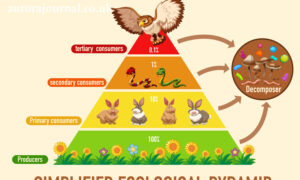In today’s wellness-rich culture, you may have come across the term orgasamtrix — a concept that blends science-informed insight, personal well-being, sensuality and meaningful connection. This article dives into what orgasamtrix means, how it can benefit you and your relationships, and practical ways to integrate it into everyday life.
Introduction
Intimacy, connection, pleasure and personal fulfilment have never been more openly discussed — and in the process new frameworks emerge. One of them is the concept of orgasamtrix. Unlike a simple “quick fix” or a gadget-driven promise, orgasamtrix is best seen as a paradigm: a fusion of neuroscience, psychology, sensual awareness and relational growth. Articles describe orgasamtrix as “a clear guide to the buzzword, the science, and how to apply it” , and as “transform(ing) your intimate life with science-backed sensual techniques.”
In this article we’ll explain the origins of orgasamtrix, explore its guiding principles, discuss who can benefit, suggest how to practise it, cover common questions, and end with how to move forward. If you’re curious about a fuller, richer approach to intimacy and wellness, keep reading.
What is orgasamtrix?
At its core, orgasamtrix is a term coined to denote a comprehensive, integrated approach to intimate wellness that goes beyond merely physical stimulation. According to sources:
-
It “integrates scientific principles with sensual practices to enhance intimate experiences.”
-
It is described as “a paradigm shift … that challenges the idea that wellness is something external you can buy, fix, or schedule.”
-
It emphasises not only physical pleasure, but emotional connection, relational communication, mindfulness and self-awareness.
In simpler terms: instead of seeing intimacy and pleasure as isolated events, orgasamtrix invites you to view them as the outcome of aligned body, mind, emotion and relationship contexts. The word itself might not yet be in widespread dictionary use — but it’s gaining traction in wellness blogs and relationship-science discussions.
Why has orgasamtrix become relevant now?

Several converging trends help explain the rise of orgasamtrix:
-
Wellness culture expansion – People are shifting from superficial approaches (e.g., quick fixes) toward more holistic ones: body + mind + relationships. The concept of orgasamtrix resonates with that.
-
Scientific interest in intimacy and connection – Neuroscience and psychology are providing more insights into how pleasure, connection and relational communication affect well-being. Orgasamtrix draws on that.
-
Digital and lifestyle pressures – With more distractions, more fragmentation of attention, and more stress, people are searching for deeper fulfilment. Concepts like orgasamtrix appear as antidotes to the “pull apart” culture.
-
Language-shifts in sexuality and relationships – There’s more openness, more nuance, more willingness to talk about intimacy, boundaries, communication, and so on. The term orgasamtrix seems to encapsulate that shift.
Core Principles of orgasamtrix
Let’s unpack the guiding principles behind the term — what it invites you to consider.
1. Holistic Integration
Rather than isolating “pleasure” as only physical, orgasamtrix encourages: body + mind + emotion + relationship. That means your emotional state, your sense of self, your communication with your partner (if you have one) – all matter.
2. Science-Informed Practice
The notion draws on research about how the brain, hormones, nervous system, sensory input, and relational attunement together create experience. For example, one source describes it as “built on the integration of Psychology, neuroscience…”
3. Mindful Awareness
Awareness of sensations, emotions, physical responses, relational dynamics. Instead of “doing” something on autopilot, you intentionally engage and reflect.
4. Communication & Connection
For many people intimacy is less about solo activity and more about shared experience: trust, vulnerability, attunement and mutual satisfaction. Orgasamtrix places relational communication as a key part.
5. Personal Empowerment & Growth

It emphasises that each individual (or each partner in a couple) has agency: you learn to understand your body, mind, desires, boundaries, responses and communicate them. You also evolve.
6. Customisation & Continuity
Instead of one-size-fits-all, the approach suggests tailoring practices and integrating into everyday life — evolving over time rather than being a one-off.
Who can benefit from practising orgasamtrix?
Orgasamtrix is not targeted exclusively at one kind of person or relationship. Here are some scenarios:
-
Individuals who feel their intimate / sensual life could be deeper, richer, more fulfilling.
-
Couples who desire stronger emotional connection, more communication around intimacy, and more satisfying shared experiences.
-
People recovering from stress, disconnection, or habituation of routines where intimacy has become predictable or perfunctory.
-
Those wanting self-understanding: how their body, mind and emotions respond, not only in intimate context but in overall well-being.
-
Wellness practitioners, therapists or coaches who wish to integrate deeper intimacy, pleasure and relational connection into their frameworks.
Potentially, nothing in the concept suggests it’s only for one orientation or one relationship model — though how you apply it will vary by your context, needs, and values.
Practical Ways to Implement orgasamtrix
Here are some actionable steps and ideas to bring orgasamtrix into your daily life or relationship.
1. Explore Self-Awareness
-
Spend time alone (or with your partner) understanding sensations: what feels good physically, what feels emotionally safe, what boundaries you have.
-
Use mindfulness or body-scan techniques: bring attention to areas of tension, comfort, breath, heart-rate.
-
Keep a journal: note how you feel before and after intimate or sensual experiences, what impeded full presence or connection.
2. Communicate Openly
-
If you’re in a relationship, schedule a talk (non-sexual time) about desires, boundaries, comfort, fantasies, pace, concerns.
-
Use “I” statements: “I feel…” / “I would prefer…” rather than implicit assumption.
-
Agree on signals or check-ins during intimacy for comfort/safety.
3. Integrate Science-Based Practices
-
Try breathing exercises before, during or after intimacy to regulate nervous system (e.g., slow diaphragmatic breaths).
-
Focus on multiple senses: sight, sound, touch, smell. Heightening awareness can increase depth of experience.
-
Practice phases of build-up and wind-down: awareness of anticipation, climax, recovery — rather than rushing.
4. Design Rituals & Safe Space

-
Create an environment: lighting, music, temperature, scents, comfort. These matter for presence and connection.
-
Agree on time without distractions: phones off, notifications muted, dedicated time.
-
Plan for aftercare: the moment after intimacy is important for connection, feedback, emotional safety.
5. Monitor Progress & Adjust
-
Every few weeks reflect: What changed? What felt richer? What blocked fuller experience?
-
Be open to experimenting: different positions, durations, kinds of touch, sensations, fantasies — but always aligned with consent.
-
Seek professional help if needed: if there are deeper issues (trauma, medical, relational conflict) professional guidance helps.
Potential Misconceptions and Cautions
When exploring a concept like orgasamtrix, it’s smart to clear up some misconceptions and note cautions.
-
Not a “magic wand” – While it offers a holistic approach, orgasamtrix is not an instant guarantee of perfect experience. It requires attentiveness, communication and practice.
-
Not purely physical – People sometimes assume “pleasure = physical only”; orgasamtrix emphasises that the emotional and relational dimensions matter equally.
-
Not only for couples – Even solo practitioners can benefit from the self-awareness and sensory practices of orgasamtrix.
-
Consent and boundaries matter – This concept only works well in the context of mutual respect, clear consent, safety and boundaries.
-
Individual variation – Everyone’s body, mind, emotions differ — what works for one person may not for another. Personalisation is key.
-
Medical & psychological conditions – If you have a sexual dysfunction, trauma history, or relationship dysfunction, it may help, but you may also require professional support in addition.
Frequently Asked Questions (FAQs)
Q1: What exactly does the word orgasamtrix mean?
A: The term isn’t yet fully standardised in academic dictionaries, but it is used to refer to a multi-dimensional approach to intimate wellness — combining scientific research (on neuroscience, psychology, physiology) with sensual practice, relational connection and personal growth.
Q2: Is orgasamtrix only for those with partners?
A: No — while relational practices are part of it, a person alone can apply orgasamtrix principles by exploring self-awareness, bodily responses, mindfulness, sensory awareness and emotional fulfilment.
Q3: How soon will I see results if I apply orgasamtrix principles?
A: The pace varies. Some people may feel a shift within a few weeks of intentional practice, while for others it may be several months of evolving awareness, communication and habit-change. The approach emphasises continuity and growth rather than one-off fixes.
Q4: Does orgasamtrix require special equipment or tools?
A: Not necessarily. The heart of it lies in awareness, communication, sensory experience and emotional connection. If desired, you can add tools (e.g., mood lighting, soft fabrics, mindful breathing aids), but they are secondary. The essence is attentiveness and intention.
Q5: Are there any risks or downsides to following this approach?
A: While generally safe, you should be mindful of: ensuring mutual consent (in partner contexts), being gentle with your body (especially if there are health conditions), seeking professional support if past trauma/sexual dysfunction exists, and not using the approach as a “pressure to perform” which could produce anxiety.
Q6: How is orgasamtrix different from regular “bedroom tips”?
A: Traditional “bedroom tips” often focus on technique or novelty. Orgasamtrix, by contrast, emphasises holistic integration — meaning mind, body, emotion, relationship and environment all matter. It’s less about “what to do” and more about “how to be” in a receptive, connected way.
Q7: Can I practise orgasamtrix in any relationship model (solo, monogamous, polyamorous)?
A: Yes — the principles of awareness, communication, consent, sensory engagement and personal growth apply across relationship models. How you implement them may differ, but the foundational mindset remains consistent.
Conclusion
To sum up, orgasamtrix represents an emerging paradigm in the field of intimacy and wellness — one that honours the full complexity of the human experience: body, mind, emotion, relationship and environment. Whether you feel your sensual life is “just okay” or you’re seeking deeper connection and fulfilment, adopting the mindset and practices of orgasamtrix can enrich your journey.


